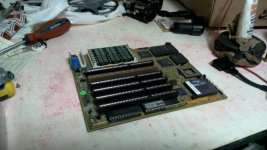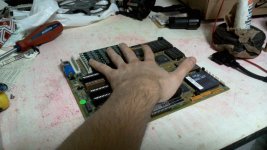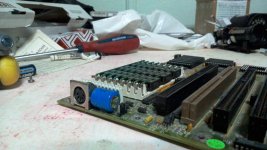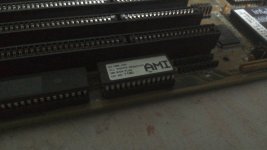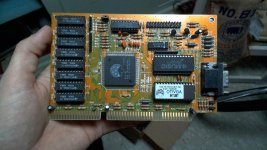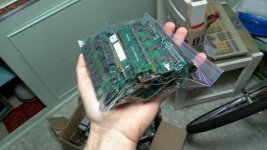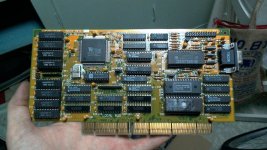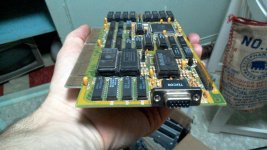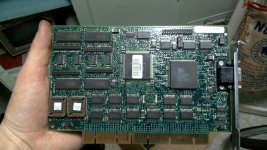Hi all,
I got a box of old computer parts from my highschool's computer club. I slapped this together:
OS: DOS 5.0
Processor: Intel i486 DX2 (66mhz version)
RAM: 8mb, on 8 chips (1mb/chip)
Mother Board: Believe it might be Compaq but it only has a 5 pin DIN connector for keyboard (no mouse support)
Graphics Card: No clue. But it's the best one I have.
Sound Card: None
Bios: 1993 American Megatrends i386 (Like this http://thumbs1.ebaystatic.com/d/l225/m/mVjjBl0foRvRIVShaukwIXg.jpg)
3.5" Floppy
168mb hard drive
I proceeded to play the Blake Stone demo: https://www.gog.com/game/blake_stone_aliens_of_gold which requres a 486 processor with 2mb of ram only.
The problem is that the game plays at literally 1/4 frame/sec. I have to wait 4 seconds before anything happens. And even the menu screen is sluggish. I have been able to
My question is what can I add to the computer to make this game play?
***Important Note***
I don't know much about computers but I did notice that during the POST, the BIOS identified the processor as a 486 SX which is significantly slower than the DX2. Also I can put my finger on the processor when the game is playing and I feel little or no heat. As if there is a clock limiter or something. Can a bios be incompatible with later versions of CPUs? Playing around in the BIOS and following a guide to optimize the settings, I got the performance to spike during loading but not gameplay. Not sure what all this means.
Thanks for the responses in advance
Pictures to come
I got a box of old computer parts from my highschool's computer club. I slapped this together:
OS: DOS 5.0
Processor: Intel i486 DX2 (66mhz version)
RAM: 8mb, on 8 chips (1mb/chip)
Mother Board: Believe it might be Compaq but it only has a 5 pin DIN connector for keyboard (no mouse support)
Graphics Card: No clue. But it's the best one I have.
Sound Card: None
Bios: 1993 American Megatrends i386 (Like this http://thumbs1.ebaystatic.com/d/l225/m/mVjjBl0foRvRIVShaukwIXg.jpg)
3.5" Floppy
168mb hard drive
I proceeded to play the Blake Stone demo: https://www.gog.com/game/blake_stone_aliens_of_gold which requres a 486 processor with 2mb of ram only.
The problem is that the game plays at literally 1/4 frame/sec. I have to wait 4 seconds before anything happens. And even the menu screen is sluggish. I have been able to
My question is what can I add to the computer to make this game play?
***Important Note***
I don't know much about computers but I did notice that during the POST, the BIOS identified the processor as a 486 SX which is significantly slower than the DX2. Also I can put my finger on the processor when the game is playing and I feel little or no heat. As if there is a clock limiter or something. Can a bios be incompatible with later versions of CPUs? Playing around in the BIOS and following a guide to optimize the settings, I got the performance to spike during loading but not gameplay. Not sure what all this means.
Thanks for the responses in advance
Pictures to come

